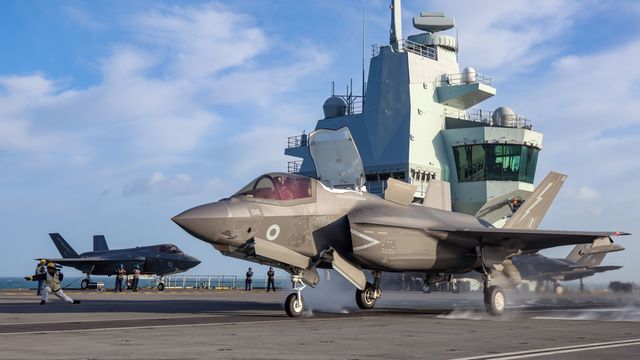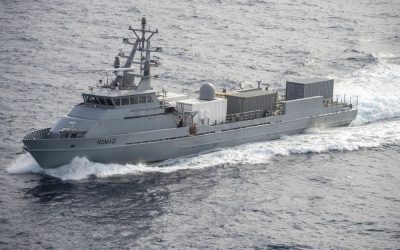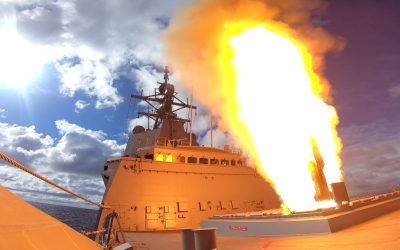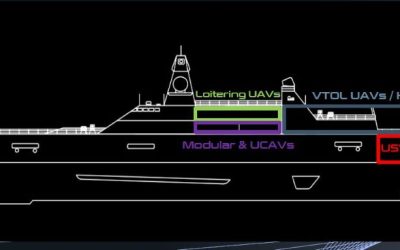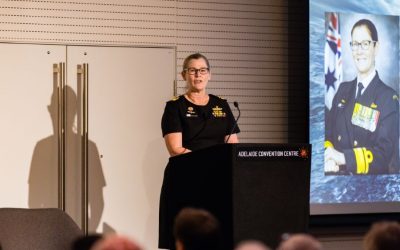Warship Technology January 2022
Together, the UK Royal Navy and Ministry of Defence are examining the use of unmanned air systems on the Queen Elizabeth class carriers, a plan that could enhance flexibility but require significant changes to the vessels.
Aviation facilities on the QEC aircraft carriers were purpose-designed around the specific needs of the ‘fifth-generation’ F-35B Lightning II STOVL strike fighter and the vessels are designed to routinely embark an air group of 24 F-35B aircraft plus rotorcraft, with the ability to surge to as many as 36 jets. However, it is recognised that the substantial procurement and operation/sustainment costs associated with manned fifth-generation fighters will necessarily limit the numbers that can be afforded.
It is also acknowledged that there are multiple competing demands on the rotorcraft embarked within the strike group. These comprise the Merlin HM2 helicopters employed for anti-submarine/anti-surface warfare, and those enabled for airborne surveillance and control by means of the Crowsnest role fit; Merlin HC4 helicopters used for maritime intra-theatre lift (MITL) and joint personnel recovery; and Wildcat HMA2 aircraft primarily roled for force protection, anti-surface warfare, and intelligence, surveillance, target acquisition and reconnaissance (ISTAR).
As a result, the Royal Navy has in recent years begun to explore the feasibility of introducing a range of uncrewed air vehicles and to give wider options for the use of different air vehicle types within the fleet. This transformation initiative – being led by the service’s DEVELOP Directorate under the umbrella of the Future Maritime Aviation Force (FMAF) – is seen as a means to grow mass, increase persistence, extend range, and build in greater flexibility and resilience.
Concept development work underpinning FMAF has identified a number of roles and missions where uncrewed aviation could augment or potentially replace crewed aircraft, notably airborne early warning (AEW)/persistent wide area surveillance; persistent ISTAR; threat simulation and training; and MITL. As well as supporting fleet operations, there is a desire that UASs should also support the Future Commando Force.
A number of capability-based FMAF elements have been scoped and the aim of current work is to better understand how to achieve the optimum mix of crewed, remotely piloted and autonomous air systems; establish coherence with other lines of development in UK defence; identify the maturity of candidate systems and solutions against missions carrying varying degrees of complexity; and promote research, test and experimentation to demonstrate and de-risk technology and techniques.
